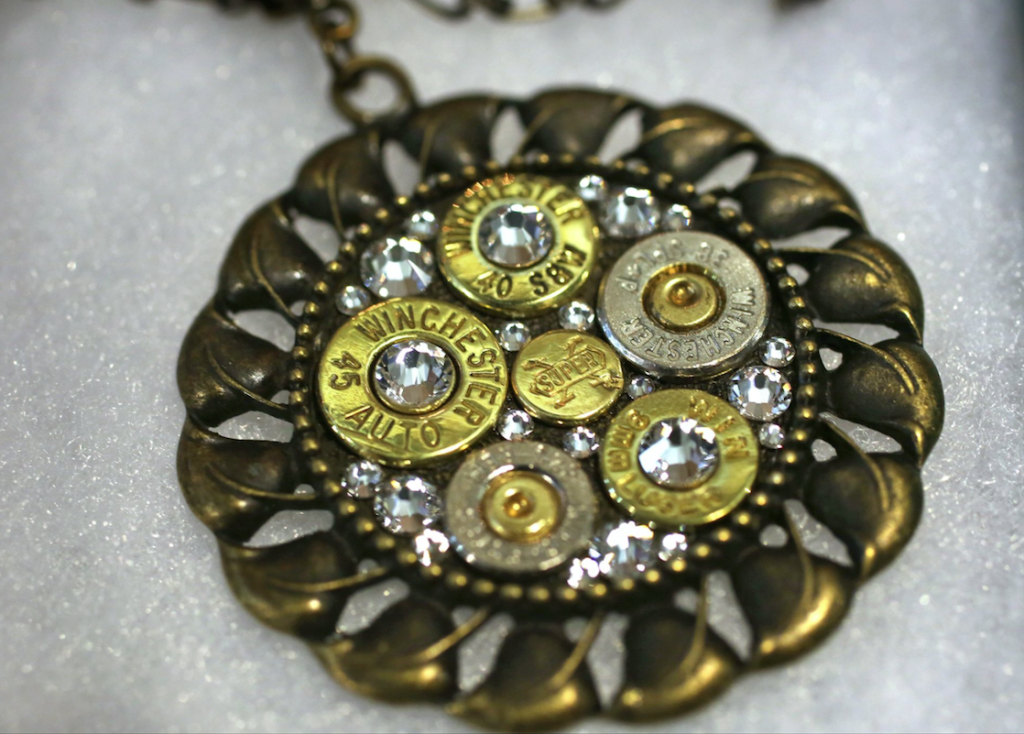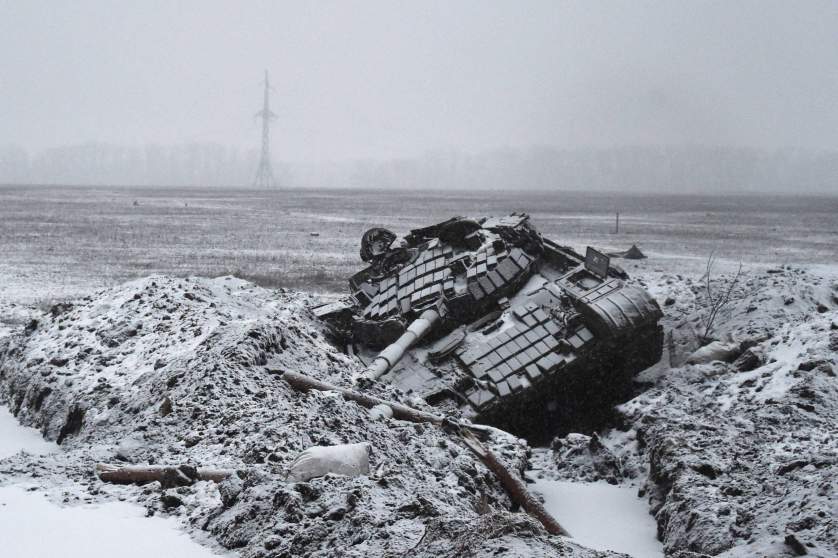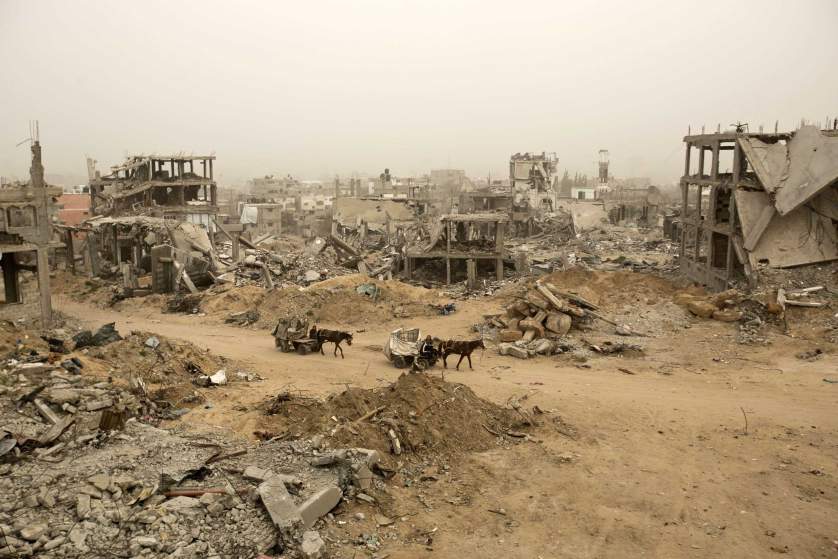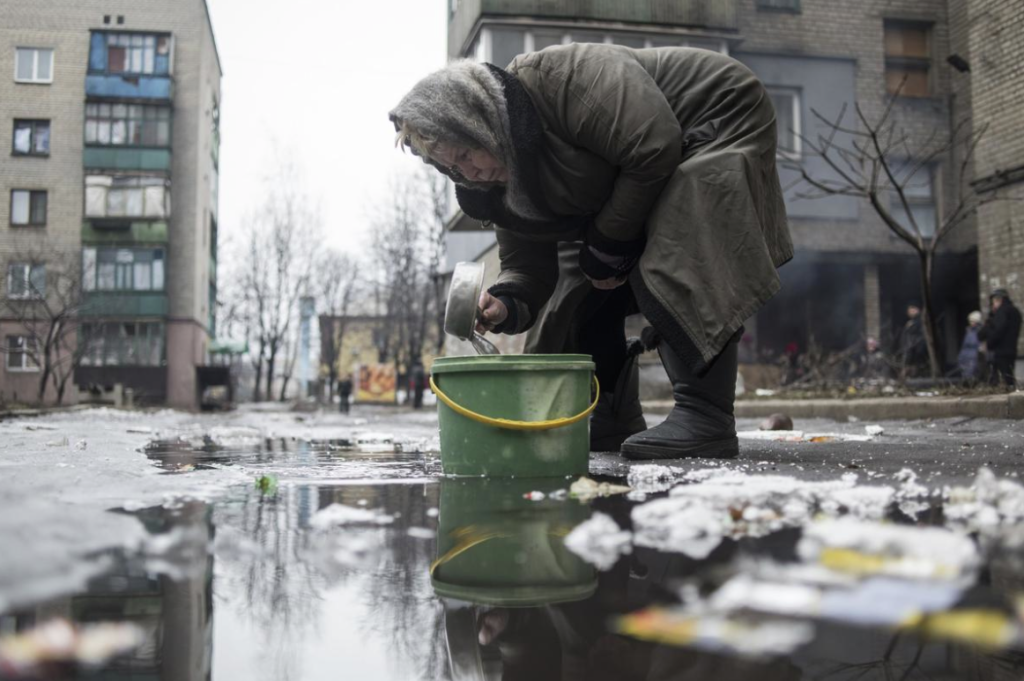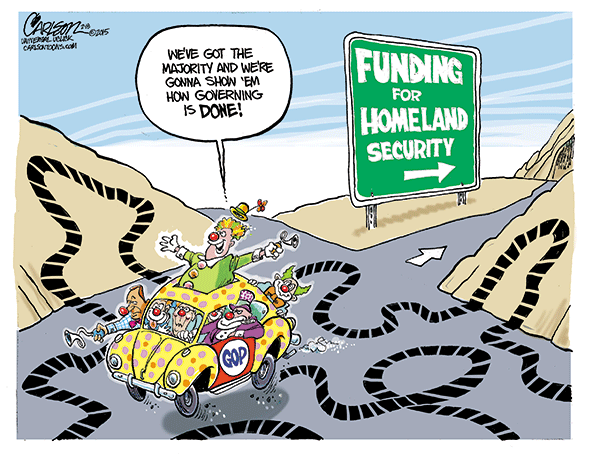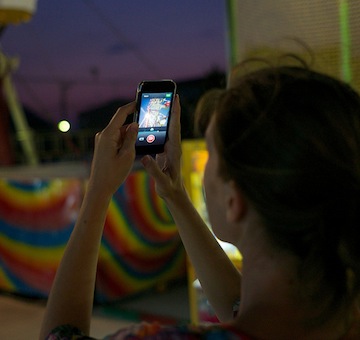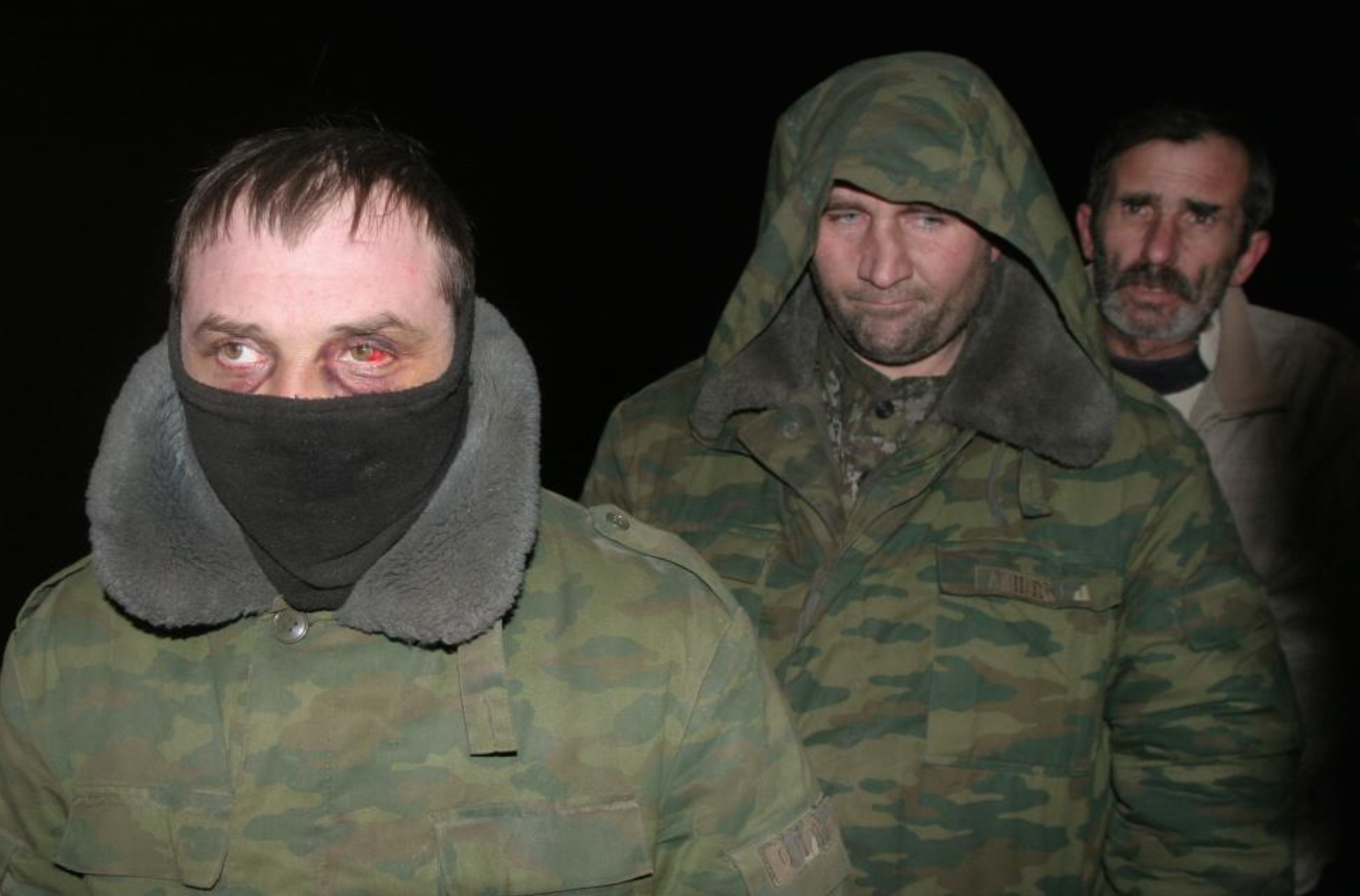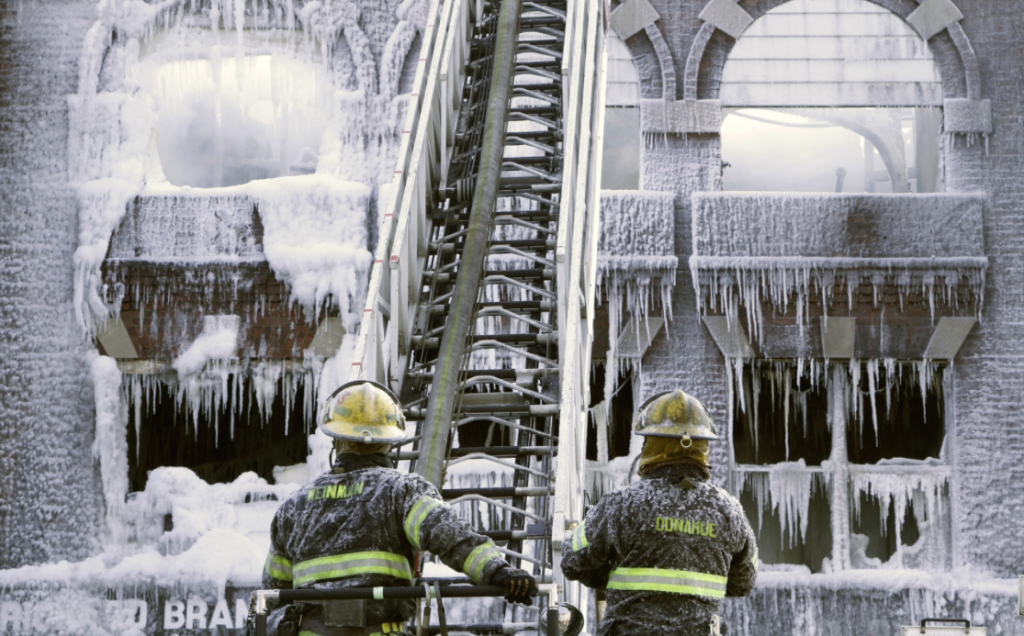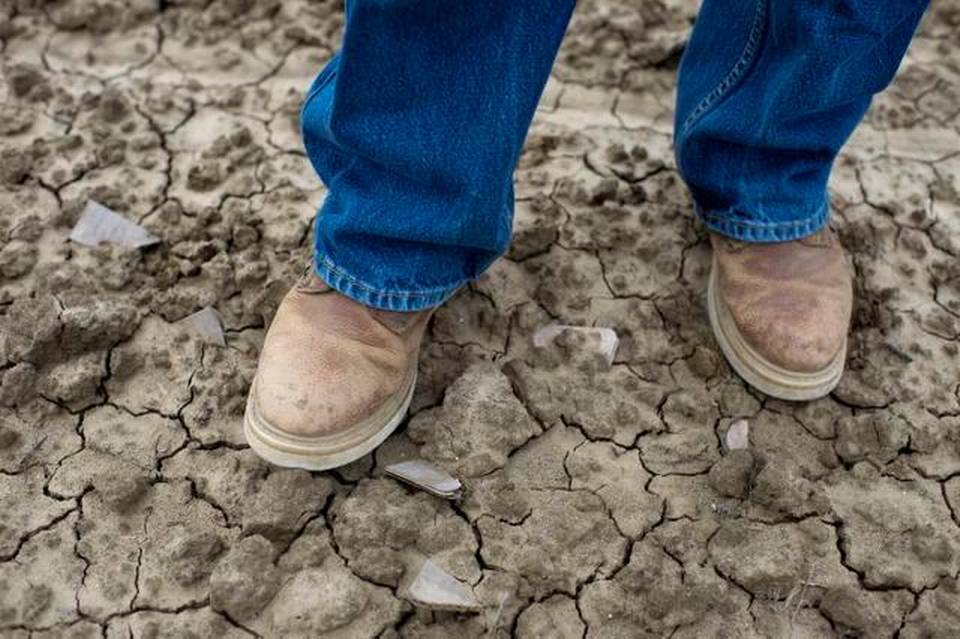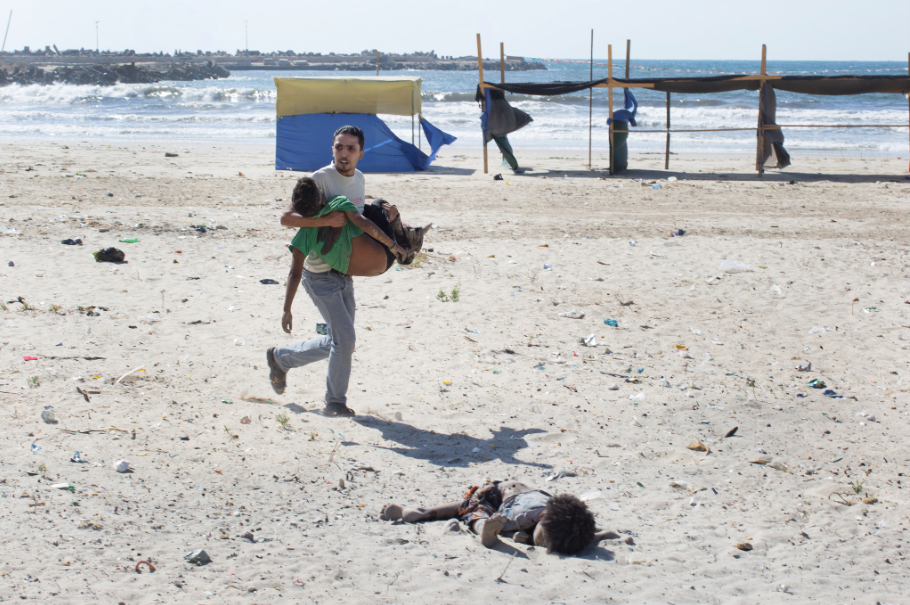The spring/summer fashion season is upon us, and what would fashion be without a full complement of accessories, including handcrafted jewelry. Women are apparently the fastest growing segment of the gun buying market—approximately 20% of all gun permits were issued to women over the last three years—and so it is perhaps no surprise that fashion accessories of all sorts are being designed to meet the demand of women gun enthusiasts for bodily adornment and display. Bullet Designs is just one company catering to this demand, as with the medallion above crafted from spent bullet casings, and such offerings are made available at fashion and firearms shows all across the country.
Jewelry, of course, serves many functions, some quite instrumental, like the belt buckle or the watch, and others more aesthetic, designed either to coordinate the elements of one’s ensemble, such as a broach, or simply to accent various features of the body. Additionally, it also can serve as a symbol of social, cultural and/or political identity, as with a wedding ring or a lapel pin that marks one’s status or affiliation with a group or institution. And of course none of these more or less practical functions are altogether discrete, so that any piece of jewelry can (and generally will) serve two or more of these functions simultaneously. Regardless of how we think about such ordinary functionalities, however, there can be little question that jewelry (like a photograph) is meant to be seen—perhaps that is its supreme function—and the question then has to be: what exactly are we seeing?
The photograph above was part of a local news story about “How Women Can Look Good While Packing Heat,” and its ostensible purpose seems to be to illustrate one of the many accessories available for purchase at a local “fashion and firearms extravaganza.” And it does that pretty well, drawing upon the conventions of advertising and still life photography that highlight its features, accenting the relationship between the brass fitting, the sparkling jewels, and the bullet casings. But the photograph does more than that as it invites us to look carefully at the medallion as it is decontextualized from its more practical functions. In short, it asks us to consider what is being shown.
There is perhaps no shortage of answers to this question, but one answer must surely be that it shows us the beautification of a technology that was designed primarily for the purpose of killing and maiming. Bullets can be used for shooting at targets, of course, but it is hard to imagine that they would have been invented for that purpose alone. There may be good reasons to have bullets—I leave that topic for another time—but even if you believe that they are necessary to a civilized society it should give some pause to think that an instrument of death would be normalized as a fashion accessory. So what exactly do we see here? Is it the conscious celebration of one aspect of a culture of violence? Or it is a sign of a culture that lacks the capacity (or will) to reflect upon its unconscious tendency to animate the tragic cycle of violence that seems to haunt us?
Photo Credit: Kelly Wilkinson/Indianapolis Star.
Cross-posted at BagNewsNotes.
